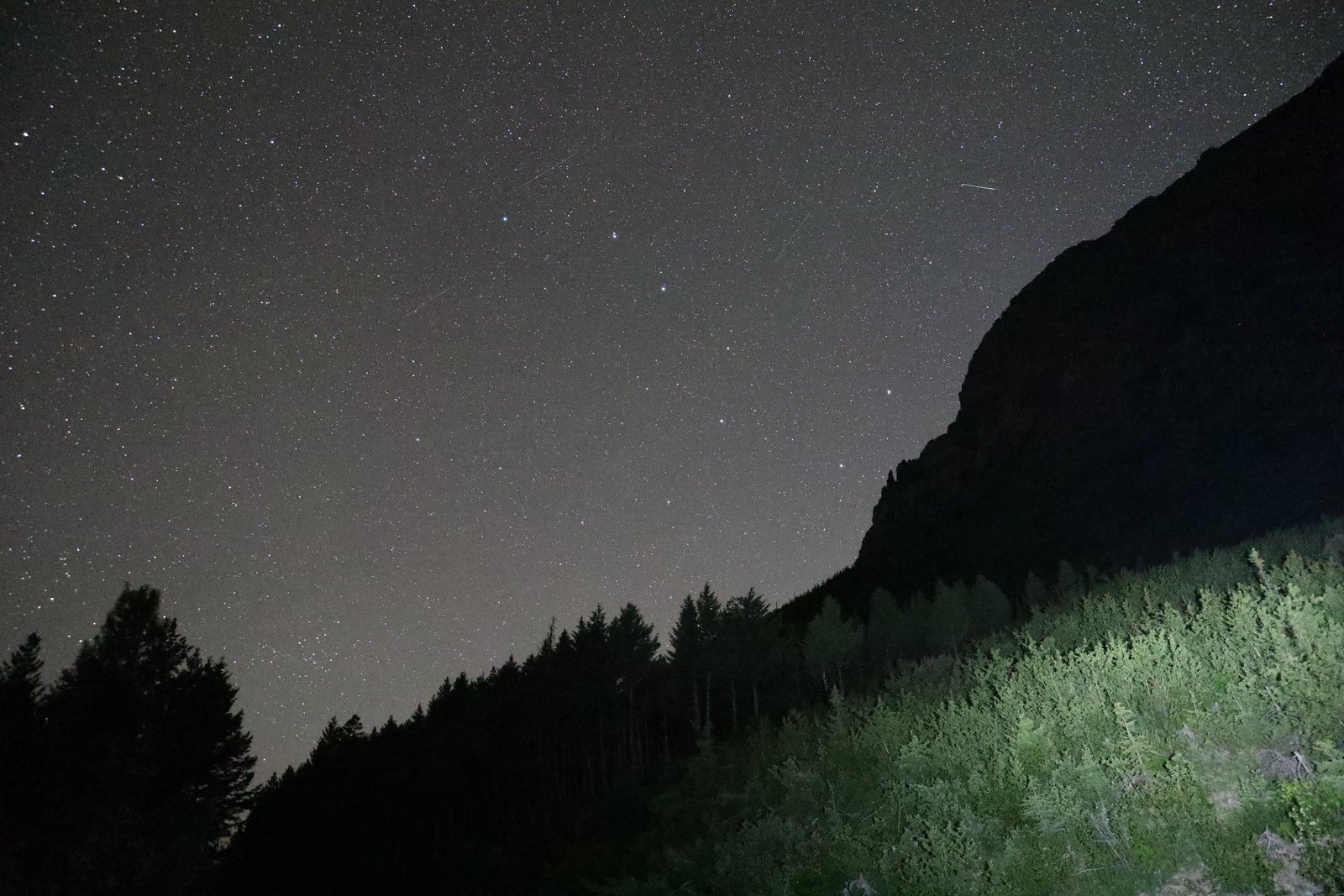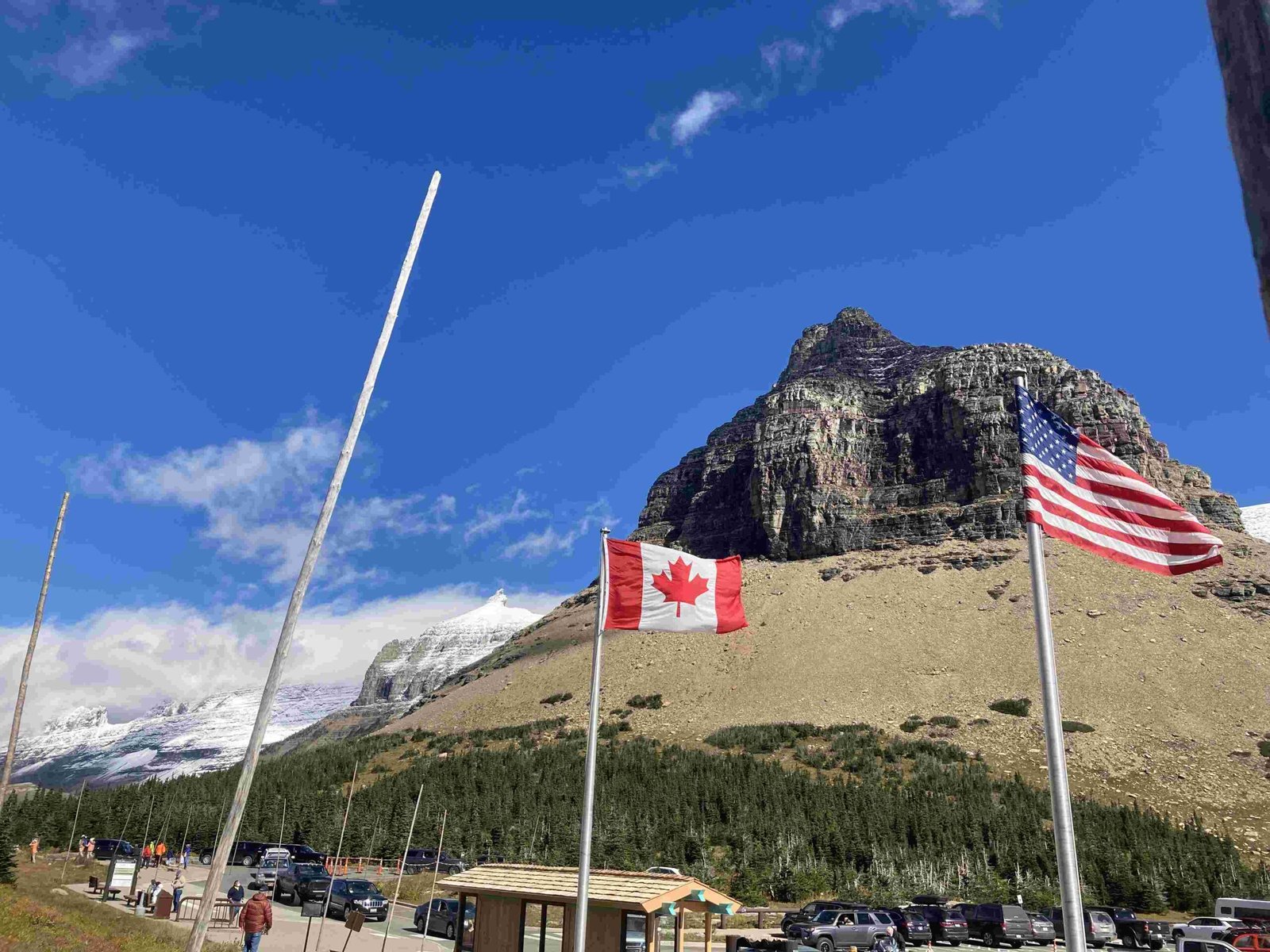Glacier National Park in Montana offers a breathtaking opportunity to witness the mesmerizing Northern Lights. This natural phenomenon, also known as the aurora borealis, paints the night sky with vibrant colors, creating an unforgettable spectacle. The park’s remote location, dark skies, and stunning landscapes provide an ideal setting for viewing this celestial display. From September to April, visitors have the best chance to experience this magical event, with peak visibility during the winter months when nights are longer and darker.
What Are the Best Months to See Northern Lights in Glacier National Park?

The optimal viewing period for the Northern Lights in Glacier National Park spans from September to April. During these months, several factors align to create ideal conditions for aurora sightings:
- Longer nights
- Darker skies
- Generally clearer weather
Here’s a breakdown of the viewing potential throughout the year:
| Season | Months | Viewing Potential |
|---|---|---|
| Fall | September – November | Good |
| Winter | December – February | Excellent |
| Spring | March – April | Good |
| Summer | May – August | Poor |
It’s important to note that while these months offer the best chances, the Northern Lights are a natural phenomenon and their appearance can be unpredictable.
Where Are the Best Locations to View Northern Lights in Glacier National Park?

Glacier National Park boasts several prime locations for observing the Northern Lights. Each spot offers unique advantages and considerations:
- Lake McDonald
- Wide-open views of the northern sky
- Easily accessible by vehicle
-
Reflections of the aurora in the lake’s surface
-
Looking Glass Road (HWY 49)
- Secluded route with multiple lookout points
- Requires a Blackfeet Recreation Permit for off-road activities
-
Only open during summer months
-
Bowman & Kintla Lakes
- Located in the northwestern part of the park
- Minimal light pollution
-
Limited accessibility in winter (requires backcountry camping)
-
Bison Paddock Loop, Waterton Lakes National Park
- Part of the Waterton-Glacier International Peace Park
- Wide-open spaces with minimal light pollution
- Accessible by vehicle (check for permits)
What Equipment Do I Need for Northern Lights Photography in Glacier National Park?
To capture the ethereal beauty of the Northern Lights, you’ll need specific photography gear:
- Camera with manual settings
- Sturdy tripod
- Wide-angle lens
- Remote shutter release or timer
- Extra batteries (kept warm)
- Warm clothing and hand warmers
Pro Tip: Practice using your camera’s manual settings before your trip to ensure you’re prepared when the lights appear.
How Can I Increase My Chances of Seeing Northern Lights in Glacier National Park?
To maximize your chances of witnessing the aurora borealis:
- Plan your visit during peak months (September to April)
- Check aurora forecasts and solar activity reports
- Choose a clear night with minimal cloud cover
- Avoid nights with a full moon
- Stay up late – the best viewing times are often around local midnight
- Be patient and persistent
What Safety Precautions Should I Take When Viewing Northern Lights in Glacier National Park?
Safety should be a top priority when venturing out to view the Northern Lights:
- Dress in warm, layered clothing
- Inform someone of your plans and expected return time
- Carry a fully charged cell phone and emergency supplies
- Be aware of wildlife, especially in remote areas
- Familiarize yourself with park regulations and obtain necessary permits
- Check road conditions and closures before setting out
Are There Guided Northern Lights Tours in Glacier National Park?
While specific information on guided Northern Lights tours within Glacier National Park is limited, there are general options available:
- Local tour operators often offer specialized aurora viewing experiences
- Some lodges and accommodations near the park may provide guided excursions
- Park rangers occasionally lead night sky programs, which may include aurora viewing
To find current tour options:
1. Contact the Glacier National Park Visitor Center
2. Check with local tourism offices in nearby towns
3. Research reputable tour companies operating in the area
What Challenges Might I Face When Viewing Northern Lights in Glacier National Park?
Several challenges can affect your Northern Lights viewing experience:
- Weather Conditions
- Cloud cover can obscure the lights
-
Sudden changes in weather are common in mountainous regions
-
Accessibility
- Some prime viewing locations may be difficult to reach, especially in winter
-
Road closures can limit access to certain areas of the park
-
Light Pollution
- Even minimal artificial light can impact visibility
-
Choose locations away from populated areas for the best views
-
Unpredictability
- Aurora activity can be sporadic and difficult to forecast accurately
- Be prepared for the possibility of not seeing the lights during your visit
How Does Glacier National Park’s Northern Lights Compare to Other Locations?
Glacier National Park offers unique advantages for Northern Lights viewing:
- Dark Sky Designation: The park’s commitment to preserving natural darkness enhances visibility
- Diverse Landscapes: Stunning backdrops of mountains, lakes, and forests add to the viewing experience
- Accessibility: Relative ease of access compared to more remote northern locations
- Additional Activities: Opportunities for daytime exploration and wildlife viewing
While not as consistently visible as locations closer to the Arctic Circle, Glacier National Park provides a more accessible option for many travelers seeking to experience the Northern Lights.
What Other Night Sky Features Can I Observe in Glacier National Park?
In addition to the Northern Lights, Glacier National Park offers exceptional stargazing opportunities:
- Milky Way visibility (best in summer months)
- Meteor showers (various times throughout the year)
- Planets and constellations
- International Space Station passes
Consider attending a ranger-led astronomy program to learn more about the night sky features visible from the park.
How Can I Plan a Successful Northern Lights Trip to Glacier National Park?
To plan a successful Northern Lights viewing trip:
- Timing: Choose dates within the optimal viewing months (September to April)
- Accommodation: Book lodging well in advance, especially for peak winter months
- Transportation: Arrange reliable transportation, considering potential winter road conditions
- Itinerary: Plan daytime activities and alternate evening plans in case of unfavorable viewing conditions
- Equipment: Prepare all necessary gear, including warm clothing and photography equipment
- Education: Learn about the science behind the Northern Lights to enhance your appreciation
Remember, flexibility is key when planning a trip centered around a natural phenomenon like the Northern Lights.
By following this comprehensive guide, you’ll be well-prepared to experience the awe-inspiring Northern Lights in Glacier National Park, Montana. This unique combination of celestial wonder and natural beauty creates memories that will last a lifetime.
References:
- https://smokybear.com/the-best-time-to-see-northern-lights-in-glacier-national-park/
- https://actiontourguide.com/2023/08/23/northern-lights-in-glacier-national-park-best-months/
- https://www.thetravel.com/can-you-see-the-northern-lights-from-glacier-national-park/
- https://www.glacierparkcollection.com/glacier-national-park/stories/northern-lights-at-the-crown-of-the-continent/
- https://www.jennifervernarskyphotography.com/blog/northern-lights-glacier-national-park/